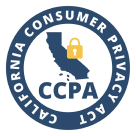The only thing worse than a listicle is a long intro to a listicle. So let’s get to it: The best softphones for your Mac.
Here are the 11 Best Softphones for Mac we reviewed:
-
01
CloudTalk—advanced call management + analytics with 160+ international numbers and powerful Mac compatibility.
-
02
OpenPhone—simple, modern softphone with strong texting tools for small teams.
-
03
Bria—minimalist SIP softphone for basic calling needs.
-
04
Zoiper—customizable SIP softphone built for PBX-heavy setups.
-
05
Linphone—open-source Mac softphone with flexible SIP support.
-
06
GoTo Connect—PBX-style softphone with solid call center features.
-
07
RingCentral—established VoIP provider with hardware rental options.
-
08
Telephone—ultra-basic Mac SIP client for solo users.
-
09
Phone.com—HIPAA-friendly softphone with essential call routing tools.
-
10
8×8—omnichannel communication suite with global calling.
-
11
MightyCall—lightweight virtual phone system with simple VoIP features.
Choose CloudTalk for powerful features, global availability, and a smooth Mac experience in one unified platform.
Why Trust Our Software Review?
For nearly 10 years, we’ve been helping more than 30,000 professionals with our solutions. Along the way, we’ve worked closely with experts across customer support, sales, and operations—listening to their challenges and following market trends.
To support better software decisions, we’ve reviewed over 200 software tools across industries. In the process, we’ve analyzed 5,500+ verified customer reviews from platforms like G2, Gartner, Capterra, and TrustRadius, plus real discussions on Reddit and Quora.
In the last year alone, we published over 1,000 articles—each one written by humans for humans, with care and a deep understanding of our customers’ needs. The reviews are based on trustworthy data, with one clear goal: to provide reliable insights and answers for you.
Learn how we keep our content integrity and our software review methodology.
What is a softphone for Mac?
A softphone for Mac is an app that lets you make and receive calls on your Mac using the internet instead of a physical phone.
Reach more people in more places a Mac softphone
Softphone for Mac Comparison Table (2025)
| Provider | Starting Price | Unlimited Calling (US/CA) | SMS/MMS | Shared Numbers | Additional Numbers | Best For |
|---|---|---|---|---|---|---|
| CloudTalk | $19/user/mo | ✔ | ✔ | ✔ | $6 per number/mo | Advanced call management & global teams |
| OpenPhone (Quo) | $15/user/mo | ✔ | ✔ | ✔ | $5/number/mo | Small teams needing modern calling & texting |
| Bria | $2.95/user/mo | ✔ | Requires upgrade | ✘ | ✘ | Minimalist SIP softphone for basic calling |
| Zoiper | Free or $49.95 license | Requires upgrade | Requires upgrade | Requires SIP/PBX | Requires SIP/PBX | PBX-heavy custom setups |
| Linphone | Free (open-source) | Requires upgrade | Requires upgrade | Requires upgrade | Requires upgrade | Flexible open-source SIP softphone |
| GoTo Connect | Contact sales | ✘ | US/CA only | Requires upgrade | Contact sales | Call centers needing PBX-style controls |
| RingCentral | $20/user/mo | ✔ (limited toll-free mins) | 25 texts/user/mo | ✔ | $4.99/number/mo | Businesses needing hardware rental options |
| Telephone | Free | ✔ | ✘ | ✘ | ✘ | Solo users needing basic SIP calls |
| Phone.com | $12.74/user/mo | Requires upgrade | Requires upgrade | ✘ | $4.99/number/mo | HIPAA-friendly teams & regulated industries |
| 8×8 | Contact sales | ✔ | ✘ | ✔ | Contact sales | Omnichannel teams & enterprise scale |
| MightyCall | ~$20/user/mo | ✔ | ✔ | ✔ | Add-on | Lightweight virtual phone system for SMBs |
CloudTalk—Best for International Teams & Mac-Friendly Scaling
Softphone software for Mac that’s built for growth: CloudTalk delivers a top-tier Mac softphone application with global reach, deep CRM integrations, and voice-AI features designed for modern sales and support teams.
What it is:
CloudTalk is a cloud-native VoIP platform designed for teams making lots of calls—especially those with international coverage, remote/hybrid workforces, or sales/CS workflows. Its Mac client lets users place and receive calls directly from macOS, paired with a browser-based dashboard.
Best for:
-
Companies working across multiple countries needing local numbers in 160+ countries.
-
Sales or support teams using CRMs like Salesforce, HubSpot or help-desks like Zendesk and wanting integrations + analytics.
-
Mac-led teams who want more than basic calling—e.g., skill-based routing, call monitoring, power dialers.
Key features:
-
Local numbers in 160+ countries—great for Mac users servicing global markets.
-
Full Mac-compatible softphone app + browser/dashboard.
-
Advanced call routing: IVR, ring groups, skill-based assignment.
-
Live monitoring: whisper, barge, listen-in for managers.
-
Deep integrations: HubSpot, Salesforce, Pipedrive, Intercom, Slack, etc.
-
Analytics & voice-AI: sentiment analysis, call tagging, search transcripts.
Integrations:
Supports dozens of CRMs, help desks, and productivity tools, including Salesforce, HubSpot, Pipedrive, Zendesk, Freshdesk, Intercom, Copper, Zapier, Make, and Microsoft Teams. Automate workflows, sync contacts, and get click-to-dial inside your existing tools—which Mac users love because everything just works.
CloudTalk Soft Phoner
| Pros | Cons |
|---|---|
| Excellent Mac compatibility and global call-coverage (160+ countries). | Pricing can scale up quickly when you add premium features or concurrent calls. |
| Strong CRM/integration ecosystem—smooth workflow for Mac-centric teams. | Some users report call-quality or mobile-app limitations (especially in certain regions). |
| Powerful analytics and call-management tools built in (AI, monitoring, routing). | Base plan lacks some features like full SMS/MMS support or unlimited outbound. |
Customer Service
Most users highlight quick onboarding and helpful support, though some report slower responses depending on region or plan.
G2 Rating
CloudTalk scores 4.4/5 on G2 across 1,600+ reviews, making it one of the highest-rated softphones for Mac teams. Users consistently praise call quality, integrations, analytics, and the intuitive interface.
CloudTalk makes calling so easy and reliable. The interface is clean, the call quality is great, and it helps me stay connected with leads without any tech issues. I really like how easy it is to track call activity and monitor team performance it saves a lot of time and keeps everything organized.
Pricing
CloudTalk Pricing
| Plan | Price | Included features |
|---|---|---|
| Lite | $19 per user/month | Call recording, international numbers, 1-user minimum |
| Essential | $29 per user/month | Real-time analytics, IVR, global SMS/MMS, 1-user minimum |
| Expert | $49 per user/month | WhatsApp integration, 24/7 live agent support, 3-user minimum |
OpenPhone—Best for Small Teams Who Want Simple Calling & Texting on Mac
Softphone software for Mac that’s modern, lightweight, and built for teams who rely heavily on texting. OpenPhone (now renamed Quo) delivers a clean Mac softphone app with shared numbers, fast setup, and strong US/Canada calling.
What it is:
OpenPhone is a VoIP softphone app designed for startups and small teams who need calling + texting inside a simple interface. The Mac app mirrors iMessage-style simplicity, making it easy to manage conversations, shared inboxes, and basic call workflows.
Best for:
-
Small teams who rely on SMS/MMS communication
-
Companies needing shared phone numbers across multiple reps
-
US/Canada–focused calling and texting
-
Mac users who prefer minimal setup and modern UI
Key features:
-
Unlimited calling & texting in the US and Canada
-
Shared phone numbers for collaborative inboxes
-
Call recording (manual + automatic)
-
iMessage-style SMS tools (snippets, templates, auto-replies)
-
Integrations via Zapier + native integrations like HubSpot and Gmail
-
Simple Mac softphone app with clean UI
Integrations:
OpenPhone integrates with HubSpot, Slack, Gmail, Zapier, Salesforce (via Zapier), and thousands of additional tools via workflow automations.
OpenPhone Softphone
| Pros | Cons |
|---|---|
| Unlimited US/Canada calling & texting | Limited international calling/texting |
| Shared phone numbers for team collaboration | No 2FA verification with virtual numbers |
| Clean, modern, Mac-friendly interface | Lacks advanced call routing & analytics |
| Strong texting features (snippets, automation) | Not ideal for large teams or heavy call centers |
Customer Service
Live chat support is responsive for most users, though support response time may vary depending on plan tier. Documentation is beginner-friendly, which suits their SMB audience.
G2 Rating
OpenPhone averages around 4.6/5 on G2, with users praising its simplicity, texting capabilities, and shared inbox features.
Pricing
OpenPhone Pricing
| Plan | Price | Key features |
|---|---|---|
| Starter | $15 per user/month | Unlimited US/CA calling & texting, shared numbers, one local/toll-free number per user |
| Business | $23 per user/month | Call transferring, CRM integrations, analytics, auto-attendant |
| Scale | $35 per user/month | AI call tagging, priority support, dedicated onboarding |
Bria—Best for Teams That Need Just the Basics (SIP Calling Only)
Bria is a minimalist softphone for Mac designed for teams who just need standard SIP calling without extra features. It’s lightweight, inexpensive, and works well if your business already uses a PBX or VoIP provider.
What it is:
Bria is a SIP-based softphone app for macOS that provides essential calling features like call transfer, call history, and basic integrations. It’s built for teams who want the simplest possible Mac softphone experience.
Best for:
-
Small teams needing only basic calling tools
-
Companies transitioning from PBX to VoIP
-
Users who don’t need texting, analytics, or shared numbers
-
Mac users looking for a low-cost, minimal interface
Key features:
-
Call transfer, call history, call blocking
-
HD audio + video calling
-
Click-to-dial
-
Optional team features through Bria Teams
-
Available on Mac, Windows, iOS, Android
Integrations:
Bria integrates with certain SIP providers and supports basic CRM click-to-dial via add-ons, but lacks the deeper integrations found in modern VoIP platforms.
Bria Softphone
| Pros | Cons |
|---|---|
| Very affordable entry pricing | No shared phone numbers |
| Simple, stable SIP softphone for Mac | No toll-free numbers |
| Supports HD voice + video | SMS & advanced features require upgrades |
| Works across multiple devices | Interface feels dated compared to modern apps |
Customer Service
Support varies depending on plan level. Basic users rely primarily on documentation; priority support is reserved for higher-tier business plans.
G2 Rating
Bria generally scores around 4.0/5 on G2, with users praising reliability but noting its lack of modern collaboration features.
Pricing
Bria Pricing
| Plan | Price | Key features |
|---|---|---|
| Bria Solo | $2.95 per user/month | Standard audio/video, call recording, up to 3 devices |
| Bria Teams | $4.95 per user/month | Team voice/video, file transfers, messaging |
| Bria Business | Contact sales | Remote SIP provisioning, advanced directories, 4+ devices |
Zoiper—Best for PBX-Heavy Setups & Custom SIP Configurations
Zoiper is a long-standing SIP softphone for Mac built for businesses that still rely on PBX systems, on-premise telephony, or highly customized VoIP setups. It’s flexible, technical, and ideal for teams that want granular control rather than modern cloud features.
What it is:
Zoiper is a cross-platform SIP softphone designed to connect directly to existing PBX or VoIP systems. It focuses on secure calling, low resource usage, and compatibility with older or highly customized telephony environments.
Best for:
-
Companies using on-prem PBX systems
-
Teams needing custom SIP configurations
-
IT-heavy teams that want maximum control
-
Mac users whose primary need is making/receiving calls via an existing VoIP provider
Key features:
-
SIP & IAX compatibility
-
TLS + SRTP encryption for secure calling
-
Call forwarding + auto-answer
-
Optional CRM click-to-dial
-
Up to two simultaneous calls
-
Written in C/C++ for low CPU usage (good for older Macs)
Integrations:
Zoiper supports basic CRM click-to-dial and PBX integrations, but almost all advanced automations require configuration on the PBX side—not in Zoiper.
Zoiper Softphone
| Pros | Cons |
|---|---|
| Strong PBX compatibility | Outdated user interface on Mac |
| Lightweight + low CPU usage | No built-in automations or workflows |
| Good encryption/security options | No VoIP number included—must bring your own |
| Supports CRM click-to-dial | Setup can be complex for non-technical users |
Customer Service
Zoiper’s support is mostly documentation-based unless users upgrade. Setup help, troubleshooting, and PBX configuration are often community-driven or handled by internal IT teams.
G2 Rating
Zoiper typically sits around 4.1/5 on G2. Reviewers like the flexibility but consistently mention UI issues and complexity.
Pricing
Zoiper Pricing
| Plan | Price | Key features |
|---|---|---|
| Zoiper Free | $0 | Basic SIP calling, PBX compatibility, limited features |
| Zoiper 5 PRO | $49.95 one-time fee | CRM click-to-dial, call transfer, auto-answer, HD voice/video |
| Enterprise Licensing | Volume pricing | Customized setup, large deployments, advanced provisioning |
Linphone—Best for Teams Wanting Open-Source Flexibility
Linphone is an open-source softphone for Mac that’s ideal for technical teams, developers, or privacy-focused organizations that want full SIP flexibility without vendor lock-in. It’s powerful, customizable, and totally free—but not the most polished option.
What it is:
Linphone is an open-source SIP softphone available on macOS, offering voice calls, video calls, messaging, file sharing, and push notifications. It’s designed for teams wanting control and configurability rather than a modern, guided SaaS experience.
Best for:
-
Developers and engineering-led teams
-
Businesses that prefer open-source software
-
Companies needing flexible SIP configuration
-
Mac users who don’t mind an older UI
Key features:
-
SIP-based voice + video calling
-
Instant messaging + file sharing
-
Push notifications
-
Dark mode
-
Browser-based version available
-
Completely open-source (free)
Integrations:
Linphone does not offer native CRM or help desk integrations; all customization depends on your SIP backend or custom development.
Linphone Softphone
| Pros | Cons |
|---|---|
| 100% free + open-source | Interface feels outdated on Mac |
| Highly configurable SIP support | Requires technical knowledge |
| Supports voice + video + messaging | Support requires a paid upgrade |
| Works on macOS, iOS, Linux, Android, browsers | No native CRM or automation features |
Customer Service
The open-source version offers community-based support only. Paid commercial licenses include onboarding, developer help, and optional branding—but you must contact sales to access it.
G2 Rating
Linphone doesn’t have a large presence on G2, but user sentiment generally highlights its flexibility and customizability while noting UI and support limitations.
Linphone is unbeatable for teams that want total SIP control without spending a fortune—but be ready for a bit of DIY. The learning curve is real.
Pricing
Linphone Pricing
| Plan | Price | Key features |
|---|---|---|
| Open-source | Free | Voice/video, messaging, file sharing, SIP support |
| Commercial License | Contact sales | Brandable apps, Flexisip server, priority support |
| Add-ons | Custom | Advanced tech support, installation help, extra modules |
GoTo Connect—Best for Contact Centers Using PBX-Style Routing
GoTo Connect blends VoIP with PBX-like controls, making it ideal for teams needing call queues, auto-attendants, and more traditional routing flows. As a softphone for Mac, its desktop app is stable and includes voicemail-to-email, business hour settings, and CRM integrations like Salesforce and Zendesk. It’s also a useful reference point if you’re comparing tools after learning what a softphone is.
-
Best for: Contact centers needing structured, PBX-style call management.
-
Key drawbacks: No public pricing, and texting only works in the U.S. and Canada.
RingCentral—Best for Teams That Still Use Desk Phones
RingCentral supports both hardware phones and a Mac softphone interface, helping legacy teams transition into hybrid cloud calling. It offers voicemail transcription, IVR menus, SMS/MMS (limited), and basic analytics, making it comparable to many VoIP softphone for Mac competitors. Mac users can also explore alternatives when reviewing softphone vs hardphone.
-
Best for: Businesses combining desk phones with cloud-based calling.
-
Key drawbacks: Only 25 texts/month on the base plan; many core features require upgrades.
Telephone—Best for Solopreneurs Who Just Need Calling
Telephone is a super-simple mac softphone application that lets users make and receive calls through a SIP provider. It’s fast, lightweight, and 100% free, but extremely limited—no texting, no analytics, no shared numbers, and no team functionality. Great for individuals who need a simple calling tool without the full complexity of business phone software for Mac.
-
Best for: Freelancers or solo operators who need only basic SIP calling.
-
Key drawbacks: Not suitable for teams; feature set is minimal even with the paid upgrade.
Phone.com—Best for HIPAA-Compliant Calling
Phone.com offers HIPAA-friendly calling, call routing, and essential call management inside a simple Mac-compatible softphone ecosystem. It includes call logs, call blocking, and 24/7 support, but locks many tools—SMS, voicemail transcription, call recording—behind higher-tier plans. It’s often compared to other virtual phone app for Mac options, though its feature set is more old-school.
-
Best for: Healthcare teams or service providers needing HIPAA compliance.
-
Key drawbacks: Very limited base plan; upgrades get expensive quickly.
8×8—Best for Global Omnichannel Teams
8×8 supports unlimited calling to 48 countries and offers voice, video, messaging, and contact center capabilities in a single system. Its Mac app integrates with CRMs, handles skills-based routing, and supports omnichannel workflows, giving it the feel of a more advanced mac VoIP client. Larger teams comparing options alongside calling software for PC may also find similar cross-platform capabilities.
-
Best for: Larger, international teams handling multiple communication channels.
-
Key drawbacks: No public pricing; no free trial; SMS available only in the U.S. and Canada.
MightyCall—Best for Simple, Budget-Friendly Virtual Calling
MightyCall is a lightweight VoIP system offering toll-free numbers, basic routing, and simple calling tools for small businesses. It runs on Mac through a web app and desktop app, and it’s a clean alternative for teams looking for a cloud calling app for Mac without extra complexity. It’s a good entry-level option if you’re exploring early-stage VoIP tools before upgrading to something more advanced.
-
Best for: Small teams who want a no-frills, affordable Mac softphone option.
-
Key drawbacks: Limited advanced features; fewer integrations than larger VoIP providers.
See CloudTalk in Action on Your Mac
Key Features to Look for in Softphone Software for Mac
Choosing the right softphone software for Mac isn’t just about making calls—it’s about finding the features that help your team work faster, stay organized, and maintain high-quality conversations. Here are the essentials every Mac user should look for:
Seamless Calling: Make, Receive & Transfer Calls Effortlessly
A great softphone for macOS should let you jump between outbound calls, inbound calls, and warm transfers without lag. Mac users rely on smooth UI/UX, so look for apps with low CPU usage and instant call handling.
Call Recording for Training & Compliance
Whether you’re coaching reps or backing up important conversations, call recording is non-negotiable. Look for systems that store recordings securely and make them easy to search—especially if you’re scaling into a cloud-based phone system.
Integrations With Your CRM & Daily Tools
The best business phone software for Mac should sync directly with platforms like Salesforce, HubSpot, Zendesk, or Slack. Native integrations eliminate manual logging and let Mac teams keep everything inside their existing workflow.
Voicemail Transcriptions to Save Time
Mac users love speed—and voicemail transcriptions help you scan messages instantly instead of replaying audio. This is especially helpful for sales and support teams juggling high call volumes.
IVR (Interactive Voice Response) for Routing Calls Smarter
IVR helps you direct callers to the right team or department automatically. If you rely on structured routing, look for a provider with flexible, no-code IVR builders similar to those you’d expect from cloud telephony systems.
Call Waiting & Do Not Disturb Mode
These tools help you manage multitasking: put callers on hold, prevent interruptions, or queue calls during peak hours. They’re especially important for Mac users working in fast-paced inbound or hybrid roles.
Local & Toll-Free Numbers
Whether you’re serving customers nationwide or expanding internationally, the ability to buy local or toll-free numbers matters. If you need broader coverage, look for providers offering strong global support or options through a sip softphone for Mac setup.
Analytics & Reporting to Improve Performance
Good data equals better decisions. Look for dashboards that show call volume, missed-call rates, rep performance, and customer trends—a must-have if you’re scaling or combining Mac softphones with other team tools.
Try a Mac Softphone Built for Modern Teams
Pros and Cons of Using Softphone Software for Mac
Softphone Software for Mac
| Pros | Cons |
|---|---|
| Lower Costs—Softphones eliminate hardware purchases and reduce maintenance, making them a cost-efficient alternative to traditional phone systems or business phone software for Mac. | Requires Reliable Internet—VoIP depends on a stable connection; without it, call quality may drop regardless of provider. |
| Flexible & Mobile—A good softphone for Mac lets teams work from anywhere using laptops, desktops, or mobile devices without switching systems. | Device Compatibility Matters—Older Macs or outdated OS versions may struggle with newer voip calling software for Mac. |
| Scalable for Growing Teams—Adding new users, numbers, or features takes minutes and works well with cloud-based platforms like cloud telephony. | Call Quality Varies by Network—Even the best Mac VoIP client can experience jitter or latency on congested networks. |
| Boosts Productivity—Features like call recording, analytics, and CRM integrations streamline workflows and reduce manual tasks. | Initial Setup Required—Teams switching from desk phones may need short onboarding time to adopt new workflows. |
See How a Mac Softphone Works in Real Time
How to Choose the Right Softphone Software for Mac
Identify Your Core Requirements First
Before comparing platforms, determine which capabilities matter most: calling reliability, routing options, analytics, or integrations. This prevents you from choosing a tool that looks good on paper but doesn’t match your daily workflow. A quick refresher on what a softphone is can help solidify your must-haves.
Set a Realistic Budget
Softphone pricing ranges widely depending on features, support, and number availability. Decide how much you can spend per user and whether annual billing or volume discounts matter.
Evaluate Mac Compatibility and Interface Quality
Some platforms are built for macOS; others are adapted versions of Windows-first apps. Prioritize tools with stable Mac clients, clean UI, and low CPU usage—especially if your team works across multiple devices.
Look for Native Integrations With Your Existing Tools
A strong softphone for mac should connect seamlessly with your CRM, help desk, and communication stack. Check for official integrations with Salesforce, HubSpot, Zendesk, Slack, or your preferred tools to avoid manual data entry and workflow friction.
Review Third-Party Ratings and User Feedback
Use verified sources like G2 or Trustpilot to confirm call quality, reliability, and support responsiveness. Look for patterns—recurring issues usually indicate real limitations.
Test the Experience With a Free Trial
A trial lets you validate call quality, UI responsiveness, reporting accuracy, and integration behavior on your specific macOS setup. Treat this step as mandatory—not optional.
Confirm Scalability and Number Availability
If your business grows or expands into new regions, you’ll want flexible Mac softphone application options for purchasing local or toll-free numbers, adding seats, and upgrading features without migrations or downtime.
Conclusion
Choosing the right softphone for macOS comes down to clarity: the features you need, the integrations you rely on, and the level of reliability your team expects every day. The best solutions balance performance with cost, offer strong Mac compatibility, and give you the tools to manage calls efficiently as your business grows.
If you want a platform that delivers all of that without hidden limitations, CloudTalk stands out. With global numbers, advanced routing, AI-powered analytics, and a dedicated softphone app for Mac, it gives sales, support, and operations teams everything they need to run professional, high-quality calls from anywhere.















